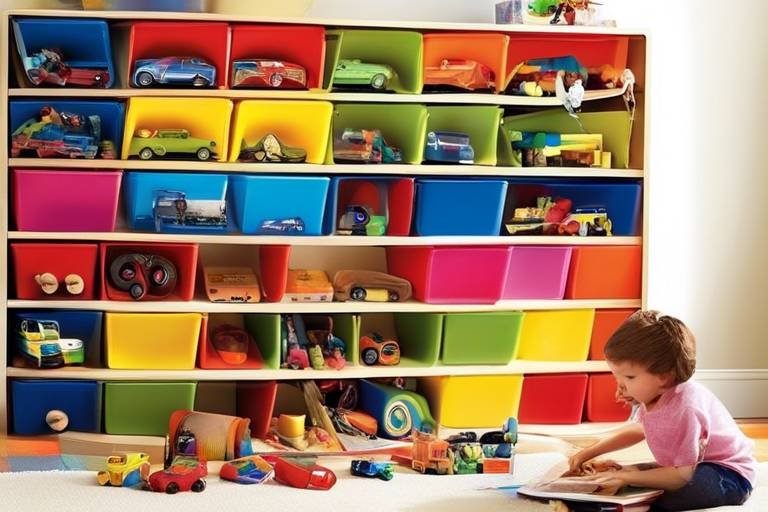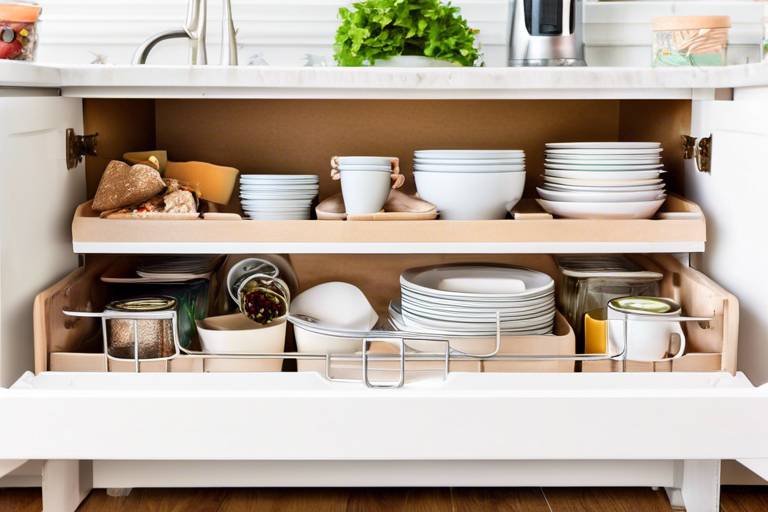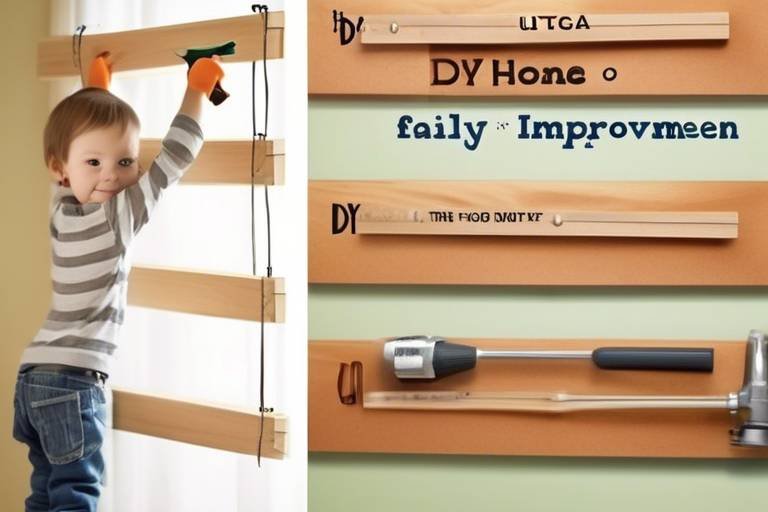How to Organize a Successful Family Yard Sale
Organizing a family yard sale can be a thrilling adventure, bringing together the excitement of treasure hunting with the opportunity to declutter your home and make some extra cash. Imagine transforming your driveway into a bustling marketplace, filled with curious shoppers eager to find their next great deal. But before you dive in, there are a few key steps to ensure your yard sale is not just successful but also enjoyable for everyone involved. This article provides a comprehensive guide on planning and executing a successful family yard sale, including tips on preparation, pricing, marketing, and creating an enjoyable experience for both sellers and buyers.
Effective planning is crucial for a successful yard sale. The first step is to choose the right date. Aim for a weekend when the weather is pleasant, and consider local events that might either attract or deter customers. Once you have a date in mind, it’s time to gather items to sell. Go through your home, closets, and garages, and gather anything that you no longer need or use. This could be anything from old toys and clothes to furniture and kitchen gadgets. A good rule of thumb is: if you haven’t used it in the past year, it might be time to let it go!
Next, organize your space for maximum impact. Set up tables or blankets in your yard to display your items clearly. Group similar items together to create a more inviting atmosphere. For example, place all your books in one area, while toys can have their own designated space. This not only makes it easier for buyers to browse but also enhances the overall aesthetic of your sale. Don’t forget to consider the flow of traffic; ensure there’s enough room for people to move around comfortably.
Setting the right prices can make or break your yard sale. You want to attract buyers while also ensuring that you make a profit. Researching market value is essential; check online marketplaces like eBay or Craigslist to see what similar items are selling for. You can also visit local thrift stores to gauge how much they charge for comparable goods. Remember, pricing too high can scare off potential buyers, while pricing too low might leave you feeling regretful later. Aim for a balance that reflects the item's condition and demand.
Understanding the market value of your items is essential. This subheading explores how to research prices online and through local sales to determine fair pricing for your goods. Spend some time browsing online marketplaces and local classifieds. Take note of how similar items are priced and consider their condition. This will help you set competitive prices that still allow you to make a profit. Keep in mind that buyers will often negotiate, so pricing slightly higher than your minimum acceptable price can give you room to haggle.
Price tags help buyers quickly assess the cost of items. Create clear, visible price tags that enhance your yard sale's organization and efficiency. Use a bold marker on bright paper, and ensure the price is easy to read from a distance. Consider using color-coded tags to indicate discounts or bundles, making it easier for customers to spot deals at a glance.
Bundling items can encourage buyers to purchase more. For example, if you have several books, you might sell them at a price of three for $5. This strategy not only increases your sales but also helps clear out more items in one go. Think creatively about how to group items together, and don’t hesitate to offer discounts for bulk purchases. This could be especially effective with toys, kitchenware, or home decor.
The way you display items can significantly influence sales. Use tables, blankets, or even shelves to create an organized and visually appealing layout. Arrange items by category and ensure that your best products are front and center to catch the eye of passersby. Adding decorative elements like colorful signs or balloons can also draw attention to your sale. Remember, a well-organized and attractive display can make all the difference in attracting buyers.
Effective marketing is key to drawing in customers. Start by spreading the word among friends and family. They can help share the news and attract more visitors. Additionally, consider creating neighborhood flyers that detail the date, time, and location of your sale. Distributing these in your local area can significantly boost attendance. Don't forget to take advantage of online platforms like Facebook or Nextdoor to announce your sale to a wider audience.
Social media platforms can be powerful tools for promotion. Post about your yard sale on your personal accounts and in local community groups. Share photos of some of the items you’ll be selling to generate excitement. Engaging with your audience through comments and messages can also help build anticipation. Remember, the more people know about your sale, the better your chances of success!
Engaging with your local community can boost attendance. Connect with neighbors and local groups to spread the word about your yard sale effectively. Consider collaborating with nearby families for a larger community yard sale, which can attract even more buyers. This not only enhances your reach but also creates a fun, festive atmosphere that encourages people to come out and shop.
Q: What items sell best at yard sales?
A: Popular items include furniture, toys, clothing, and home decor. Vintage and unique items also tend to attract buyers.
Q: How should I handle negotiations with buyers?
A: Be open to negotiation, but know your minimum price. A friendly attitude can go a long way in making a sale.
Q: What if it rains on the day of my yard sale?
A: If possible, choose a location that can be covered, or consider rescheduling to a sunnier day.

Planning Your Yard Sale
Effective planning is crucial for a successful yard sale. Think of it as setting the stage for a performance; the better the preparation, the more likely you are to wow your audience! Start by choosing the right date. Ideally, aim for a weekend when the weather is pleasant. A sunny Saturday morning can bring in a crowd, while a rainy day might leave you with a soggy display and disappointed hopes. Don't forget to check local events; you wouldn’t want to compete with a neighborhood festival or a big game!
Once you have a date in mind, it’s time to gather items to sell. This is where the fun begins! Walk through your home and look for items that no longer spark joy or serve a purpose. Think about clothes that have been hiding in the back of your closet, toys that your kids have outgrown, or that old treadmill that has become a glorified coat rack. Make a list of all the items you’re willing to part with. It can be helpful to categorize these items into groups, such as:
- Clothing
- Electronics
- Furniture
- Household Items
- Toys
Next, organizing your space is key to maximizing your yard sale's impact. Consider how you want to set up your items. A well-organized space not only looks appealing but also makes it easier for buyers to browse. Use tables to display items at eye level, and create designated areas for different categories. This way, shoppers can quickly find what they’re looking for without feeling overwhelmed. Remember, first impressions matter. An organized and inviting layout can make all the difference!
Additionally, think about the flow of foot traffic. You want to encourage people to wander around and discover all the treasures you have to offer. Arrange your tables in a way that allows for easy navigation, perhaps in a U-shape or a circular pattern. Don't forget to leave some space for people to stand and examine items without feeling cramped. A little creativity in your layout can lead to big sales!
Lastly, consider your neighbors. It’s always a good idea to inform them about your yard sale plans. Not only could they stop by, but they might also spread the word to their friends and family. Plus, if you’re feeling ambitious, you could even organize a neighborhood yard sale event, where multiple families participate. This could attract more shoppers and create a fun community atmosphere!

Pricing Your Items
Setting the right prices can make or break your yard sale. You might think that just slapping a price tag on an item is enough, but trust me, there’s an art to it. Imagine walking into a yard sale where everything is overpriced or, conversely, where the prices are so low that you wonder if the seller knows the value of their goods. You want to strike a balance that attracts buyers while ensuring you still make a profit. So, how do you do that? Let’s dive into some effective strategies for pricing your items competitively.
First off, researching the market value of your items is essential. This isn’t just about guessing what you think something is worth; it’s about understanding what similar items are selling for in your area. You can start by checking online marketplaces like eBay or Craigslist to see what similar items are going for. Pay attention to the condition of the items and adjust your prices accordingly. If you have a vintage lamp that’s in pristine condition, you might be able to ask for a higher price than a lamp that has seen better days.
Next, let’s talk about using price tags effectively. Clear and visible price tags not only help buyers quickly assess the cost of items but also enhance the overall organization of your yard sale. You want your tags to be easy to read from a distance, so consider using large fonts and bold colors. A simple, yet effective way to present prices is to use a color-coding system. For example, you could use red for items priced under $5, blue for items between $5 and $20, and green for items over $20. This way, buyers can quickly gauge what fits their budget.
Another great strategy is bundle pricing. This can be particularly effective for smaller items. For instance, if you have a collection of books, consider offering a deal where buyers can get three for the price of two. This not only encourages buyers to purchase more but also helps you clear out items that might otherwise sit unsold. Here’s a quick example of how you could structure bundle pricing:
| Item | Individual Price | Bundle Price |
|---|---|---|
| Book A | $3 | $5 for any 3 books |
| Book B | $4 | |
| Book C | $2 |
By presenting this kind of pricing, you create a sense of value for the buyer, making them more likely to purchase multiple items. Remember, it’s all about creating an enticing offer that feels like a steal!
Lastly, don’t forget that negotiation is part of the yard sale experience. Be prepared to haggle a bit. If someone offers you a lower price, consider whether you’re willing to accept it. Sometimes, it’s better to sell an item at a slight loss than to pack it back up and store it away. You might even want to set your prices slightly higher than your bottom line, giving you room to negotiate while still achieving your desired profit.
In summary, pricing your items effectively involves a combination of research, clear presentation, strategic bundling, and a willingness to negotiate. By following these guidelines, you’ll not only attract more buyers but also increase your chances of walking away with cash in your pocket and a cleared-out garage!
- How do I determine the right price for my items? Research similar items online and consider their condition to set a fair price.
- Should I be open to negotiation? Yes! Be flexible with your prices to encourage sales.
- What if I have no idea what to price an item? Look for similar items on online marketplaces or ask friends for their opinions.

Researching Market Value
Understanding the market value of your items is essential when planning a yard sale. You wouldn’t want to underprice a cherished antique or overprice a simple kitchen gadget, right? helps you strike that perfect balance, ensuring you attract buyers while still making a profit. So, how do you go about this? Let’s dive in!
First off, start by checking online marketplaces like eBay, Craigslist, or even Facebook Marketplace. These platforms provide a wealth of information on what similar items are selling for. When you search for your items, pay attention to the following:
- Condition: Is your item in mint condition, or does it have some wear and tear? Adjust your pricing accordingly.
- Sold Listings: Look for items that have actually sold, not just those listed for sale. This gives you a clearer picture of what buyers are willing to pay.
- Location: Prices can vary by region. If you’re in a city where demand is high, you might be able to charge a bit more.
Next, consider visiting local thrift shops or consignment stores. These places often have similar items for sale, and observing their prices can provide valuable insights. You might even find a few items to resell at your own yard sale!
Another great resource is yard sale and garage sale apps. These platforms can help you see what others in your area are charging for similar items. By comparing your items to theirs, you can gauge whether your prices are competitive or if they need adjusting.
Lastly, don’t forget to tap into the wisdom of your community. Ask friends or family members who have held yard sales for their insights on pricing. They may offer tips based on their experiences that can save you time and effort.
In summary, researching market value is a crucial step in preparing for your yard sale. By leveraging online resources, local shops, and community knowledge, you can set prices that attract buyers while ensuring you make a profit. Remember, it’s all about finding that sweet spot!

Using Price Tags Effectively
When it comes to yard sales, price tags are your unsung heroes. They don’t just tell buyers how much something costs; they also play a pivotal role in the overall organization and flow of your sale. Imagine walking into a yard sale where items are scattered haphazardly, and you have to ask for prices on every single item. Frustrating, right? That’s why clear and effective price tags can transform the shopping experience from overwhelming to enjoyable.
First off, make sure your price tags are visible and legible. Use bold markers and large fonts so that potential buyers can easily read the prices from a distance. You want your tags to stand out, not blend into the background. Consider using colored paper or tags to categorize items—like blue for clothing, yellow for toys, and green for home goods. This not only makes it easier for shoppers to find what they’re looking for but also adds a splash of color to your display, making it more inviting.
Next, think about the placement of your price tags. It’s best to attach them directly to the item whenever possible. For example, if you’re selling a lamp, place the tag on the base where it’s easily visible. If an item is too large or awkward to tag directly, consider using a nearby sign with the price listed. Just make sure it’s clear which item corresponds to the price on the sign.
Another tip is to include descriptions on your price tags when appropriate. For instance, instead of just marking a book with a price, you could add a short note like “Best-selling mystery novel – like new!” This adds value and can entice buyers who might be on the fence. If you’re selling multiple items from a set, using tags that indicate the set’s original price can also help buyers see the value they’re getting.
Finally, be prepared for negotiation. When pricing your items, consider leaving a little room for bargaining. If you’re firm on your prices, make that clear on the tag with a simple “Firm Price” note. However, if you’re open to haggling, you might want to write your prices slightly higher than your minimum acceptable price. This way, you can still come away with a profit while giving buyers the satisfaction of feeling like they got a deal.
To summarize, using price tags effectively can enhance your yard sale experience significantly. Here’s a quick recap of best practices:
- Visibility: Use bold markers and large fonts.
- Placement: Attach tags directly to items when possible.
- Descriptions: Add notes to entice buyers.
- Negotiation: Be open to haggling while ensuring your prices are fair.
By following these tips, you’ll not only make it easier for buyers to shop but also increase your chances of making those sales. Remember, happy buyers are more likely to return for future sales, and a well-organized yard sale can create a positive impression that lasts long after the last item is sold!
Q: How can I ensure my price tags are easy to read?
A: Use large, bold fonts and bright colors. Make sure to write clearly and avoid overly complicated designs that might distract from the price.
Q: Should I include prices on all items?
A: Yes, it’s best to price every item to avoid confusion and make the shopping experience smoother for buyers.
Q: What if I want to negotiate prices?
A: Consider pricing items slightly higher than your minimum acceptable price to allow room for negotiation. You can also indicate on the tag if you are open to offers.

Bundle Pricing Strategies
When it comes to yard sales, one of the most effective ways to encourage buyers to open their wallets is through . Imagine walking into a yard sale and seeing a sign that says, "Buy 2, Get 1 Free!" It’s enticing, right? By bundling items together, you not only increase the perceived value of the items but also make it easier for customers to justify their purchases. This technique can lead to higher sales volume and a quicker turnover of items.
To create attractive bundles, start by grouping similar items. For example, if you have a collection of books, you could offer a deal where customers can choose any three books for a set price. This not only encourages buyers to pick up more items than they initially planned but also helps you clear out inventory faster. You might also consider bundling complementary items, like a teapot with matching cups or a set of gardening tools with seeds. These combinations can create a sense of value and encourage customers to buy more than they originally intended.
Another effective approach is to implement tiered pricing for bundles. For instance, you could create a structure like this:
| Bundle Size | Price |
|---|---|
| 1 Item | $2 |
| 3 Items | $5 |
| 5 Items | $8 |
This table shows how the more items a customer buys, the better the deal they receive. It’s a win-win situation that can lead to increased sales. However, be mindful of your profit margins. While it’s important to offer attractive deals, you don’t want to undercut your potential earnings. Always calculate your costs and ensure that the bundles are still profitable.
Don’t forget to clearly label your bundles. Use bright, eye-catching signs that explain the deal, so customers can easily understand the savings they’re getting. This will help draw attention to your bundled items and encourage impulse buys. Additionally, consider creating a “bundle of the day” that features different items each day of your sale. This keeps things fresh and exciting for repeat customers who may come back to see what new deals you have.
Lastly, be open to negotiation. Some customers may be interested in a specific bundle but feel that the price is a bit high. If you can afford to lower the price slightly or offer an additional item as part of the deal, it could seal the sale. Remember, the goal is to get items out of your hands and into the hands of happy buyers!

Creating Attractive Displays
When it comes to yard sales, first impressions matter! The way you display your items can either draw in potential buyers or send them on their way. Think of your yard sale as a mini-storefront; you want it to be inviting and engaging. Start by organizing your items into categories—this not only makes it easier for shoppers to find what they're looking for but also creates a visually appealing layout. For instance, group together books, toys, and kitchenware, so that each section tells a story.
Next, consider the height and arrangement of your displays. Use tables, blankets, or even crates to create different levels. This adds dimension and makes items more visible. Imagine walking into a store where everything is at eye level versus one where you have to bend down or look up. Which would you prefer? Elevating your best items can create a focal point that draws attention. You might even want to use a clothes rack for hanging clothes, as it not only saves space but also makes clothing easier to browse.
Lighting is another crucial aspect to consider. If your yard sale is during the day, make sure your setup is in a well-lit area. Natural light can enhance the colors and textures of your items, making them more appealing. If your sale stretches into the evening, consider adding some outdoor lights or lanterns to keep the atmosphere warm and inviting.
Don’t forget to create an inviting atmosphere! Play some soft music in the background to set a relaxed tone. You could even offer refreshments like lemonade or cookies. This not only makes your yard sale more enjoyable but can also encourage buyers to linger longer, increasing the likelihood of a sale.
Lastly, signage plays a pivotal role in guiding customers through your sale. Use clear, bold signs to indicate prices and categories. You can even add a few fun signs that say things like “Everything Must Go!” or “Bargains Await!” to create excitement. Remember, the goal is to make shopping at your yard sale as easy and enjoyable as possible. Happy selling!
- What items sell best at yard sales? Popular items include children's toys, household goods, and gently used clothing.
- How do I price my items? Research similar items online and consider their condition. A good rule of thumb is to price items at about 10-30% of their original retail price.
- Is it necessary to have change on hand? Yes, be sure to have plenty of small bills and coins to make transactions smoother.
- How can I attract more customers? Promote your yard sale through social media, local neighborhood groups, and flyers in your community.

Marketing Your Yard Sale
Marketing your yard sale effectively is the secret sauce that can turn a simple gathering of items into a bustling event filled with eager buyers. Think of it as throwing a party; you wouldn’t invite people without sending out the invites, right? The same principle applies here. You want to create buzz and excitement around your sale, so let’s dive into some tried-and-true strategies that will help you draw in the crowds.
First off, start by **utilizing social media**. Platforms like Facebook, Instagram, and even Twitter can be your best friends when it comes to spreading the word. Create a catchy post that highlights the best items you’ll be selling. Use bright, eye-catching photos and don’t forget to include the date, time, and address. You might even consider creating an event page on Facebook where you can share updates and remind people as the day approaches. Think of social media as your digital megaphone, amplifying your message to a wider audience.
Next, consider **engaging your community**. This is where the magic happens! Talk to your neighbors and local groups. You can hang flyers in community centers, libraries, or even local coffee shops. Make sure your flyers are colorful and informative. Include enticing phrases like “Everything must go!” or “Treasure hunt for great deals!” to grab attention. A well-placed flyer can be just as effective as a social media post, especially in neighborhoods where people are looking for local events.
Another effective strategy is to **leverage local online marketplaces**. Websites like Craigslist or local Facebook groups often have sections dedicated to garage or yard sales. Post your sale details there, and don’t shy away from sharing photos of your best items. This not only increases visibility but also attracts buyers who are specifically looking for deals in your area.
To make your marketing even more impactful, consider creating a **countdown** to your sale. A few days before, start posting reminders on your social media. You could even share sneak peeks of interesting items to build anticipation. Think of it like teasing a movie release; the more you hint at what’s to come, the more intrigued people will be. You might also want to encourage your friends and family to share your posts, widening your reach even further.
Finally, don’t underestimate the power of **word-of-mouth**. Talk to your friends, family, and coworkers about your upcoming yard sale. You’d be surprised at how effective a simple conversation can be. Maybe a coworker knows someone who loves collecting vintage items, or a friend might have a neighbor who is on the lookout for furniture. Every little connection counts!
In summary, marketing your yard sale is all about creating excitement and visibility. By using social media, engaging with your community, leveraging local online platforms, and encouraging word-of-mouth, you can ensure that your yard sale is a hit. So, roll up your sleeves, get creative, and prepare for a day filled with fun and great sales!
- What is the best day to hold a yard sale? Generally, weekends are the most popular days for yard sales, especially Saturday mornings when people are out and about.
- How can I ensure I have a successful sale? Effective marketing, clear pricing, and an organized display of items can significantly enhance your chances of success.
- Should I accept digital payments? If possible, offering options like PayPal or Venmo can attract more buyers who prefer cashless transactions.

Utilizing Social Media
In today’s digital age, social media is an invaluable tool for promoting your yard sale. Imagine having the power to reach hundreds, if not thousands, of potential buyers with just a few clicks! Platforms like Facebook, Instagram, and Twitter can help you create buzz and draw in a crowd. Start by crafting a compelling post that highlights the unique items you’ll be selling. Use eye-catching photos and engaging descriptions that make people excited to come and check it out. For example, if you have vintage toys or handmade crafts, showcase them with vibrant images that truly capture their charm.
But don’t stop there! To maximize your reach, consider joining local community groups on Facebook or Nextdoor. These platforms often have groups dedicated to buying and selling items or local events. By posting in these groups, you can tap into a community of eager buyers who are already interested in yard sales. Be sure to include essential details such as the date, time, and location of your sale, along with any special items you want to highlight. You might even want to create a Facebook event to keep everyone informed and engaged as the day approaches.
Another effective strategy is to utilize Instagram Stories to give potential buyers a sneak peek of what they can expect. Post short videos or photos of your items in the days leading up to the sale. This can create anticipation and excitement. You can even run a countdown to your sale day to remind your followers to mark their calendars!
Don’t forget to encourage your friends and family to share your posts. Word of mouth is incredibly powerful, and when your network shares your sale, it increases your visibility exponentially. You might also consider using a few relevant hashtags like #YardSale, #GarageSale, or even local hashtags to get your post in front of more eyes. Just think of it as casting a wide net to catch as many interested buyers as possible!
Lastly, after the yard sale, take a moment to share your success on social media. Post photos of your bustling sale or the happy faces of customers who found treasures. This not only gives you a sense of accomplishment but also keeps your audience engaged for future events. Who knows, they might be excited to join you next time!
Here are some common questions about utilizing social media for yard sales:
- How far in advance should I start promoting my yard sale on social media? It's best to start promoting at least one week in advance to build anticipation.
- What type of content should I post? Share photos of your items, details about the sale, and any special features that might attract buyers.
- Can I use social media to sell items before the yard sale? Absolutely! Many people successfully sell items through social media marketplaces before their actual yard sale.

Engaging Your Community
Engaging your community is not just about putting up a sign and hoping for the best; it’s about creating a buzz that draws people in and makes them excited to visit your yard sale. Think of your yard sale as a mini-event that can bring neighbors together, foster connections, and even create lasting memories. So, how do you get your community involved? Here are some effective strategies to consider.
First, start by reaching out to your neighbors. A simple conversation over the fence or a friendly chat while walking your dog can do wonders. Let them know about your upcoming yard sale and invite them to join in. Maybe they have items to sell too! You can even organize a neighborhood yard sale day, where multiple families participate. This not only increases traffic to your sale but also creates a festive atmosphere that everyone can enjoy.
Next, consider utilizing local community boards or online platforms. Websites like Nextdoor or Facebook groups are fantastic for spreading the word. Post about your yard sale, share what items you’ll have, and perhaps even include a few enticing pictures. You could say something like, “Join us for a treasure hunt this Saturday! We’ll have everything from vintage clothes to unique home decor.” This kind of engaging language can pique interest and encourage people to mark their calendars.
Another way to engage your community is by offering incentives. Think about hosting a raffle or giveaway during your yard sale. For example, for every $10 spent, customers could enter to win a gift card to a local coffee shop. This not only encourages purchases but also strengthens ties with local businesses, creating a win-win situation.
Don’t forget about the power of flyers! Create colorful, eye-catching flyers and distribute them around your neighborhood. You can place them on community bulletin boards, in local shops, or even hand them out during community events. Make sure to include all the essential details: date, time, location, and a sneak peek of what’s for sale. The more vibrant and inviting your flyer, the more likely it will catch a passerby’s eye.
Finally, consider collaborating with local charities or community organizations. You could donate a portion of your proceeds to a cause that resonates with you and your community. This not only boosts attendance but also positions your yard sale as a community-focused event. People love supporting local initiatives, and knowing that their purchases contribute to a good cause can motivate them to spend more.
In summary, engaging your community is all about creating connections, spreading the word, and making your yard sale a fun and inclusive event. By fostering a sense of community spirit, not only will you increase attendance, but you’ll also create a memorable experience for everyone involved.
- How can I promote my yard sale effectively? Utilize social media, local community boards, and engage your neighbors to spread the word.
- What items sell best at yard sales? Popular items include children's toys, clothing, household items, and vintage treasures.
- Should I negotiate prices with buyers? Yes, be open to negotiation! It can help close sales and make buyers feel valued.
- How can I create a welcoming atmosphere? Set up your sale neatly, play some background music, and offer refreshments to create a friendly vibe.
Frequently Asked Questions
- What items are best to sell at a yard sale?
When it comes to yard sales, think about items that are gently used and in good condition. Popular choices include children's toys, clothes, furniture, and household items. Remember, the more unique or vintage the item, the better! Just like a treasure hunt, buyers love to discover something special.
- How do I determine the right price for my items?
Pricing can be tricky, but a good rule of thumb is to price items at about 10-30% of their original retail value. Research similar items online or at local thrift stores to get a sense of what others are charging. It’s like a game of strategy—find that sweet spot where you attract buyers while still making some cash!
- How can I effectively market my yard sale?
Marketing is key! Utilize social media to announce your sale and create buzz. Post in local community groups, share on your profile, and even consider using neighborhood apps. Flyers can work wonders too—just make sure they’re colorful and placed in high-traffic areas. Think of it as casting a wide net to catch as many fish as possible!
- What’s the best way to display items?
Presentation matters! Arrange items aesthetically, grouping similar things together. Use tables or blankets to create designated areas for each category. The goal is to make it easy for buyers to browse, just like a well-organized store. Remember, a tidy display can be the difference between a sale and a pass!
- Should I accept negotiation on prices?
Absolutely! Many buyers expect to haggle a bit. Be open to negotiations and have a minimum price in mind that you’re willing to accept. Think of it as a friendly game where both sides can score a win—buyers get a deal, and you still make a sale!
- How can I engage my community to boost attendance?
Engaging your community can significantly increase foot traffic. Consider reaching out to neighbors, local groups, and even schools. You might host a neighborhood event where multiple families hold sales together, creating a mini-festival atmosphere. It’s all about building connections and creating excitement!
- What should I do with unsold items after the sale?
Don’t worry if some items don’t sell! You can donate them to local charities or thrift stores, or even consider hosting another sale in the future. Think of it as a chance to declutter and do some good at the same time. Plus, it sets the stage for your next yard sale adventure!



















